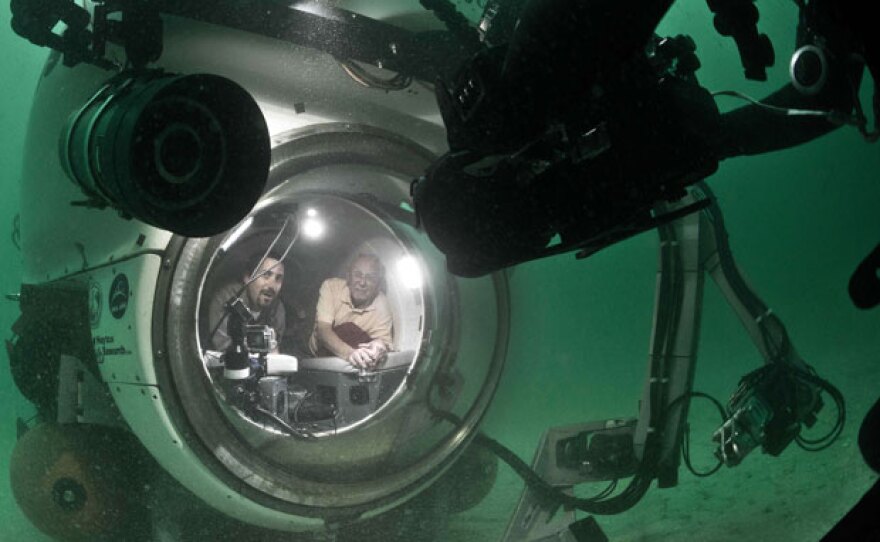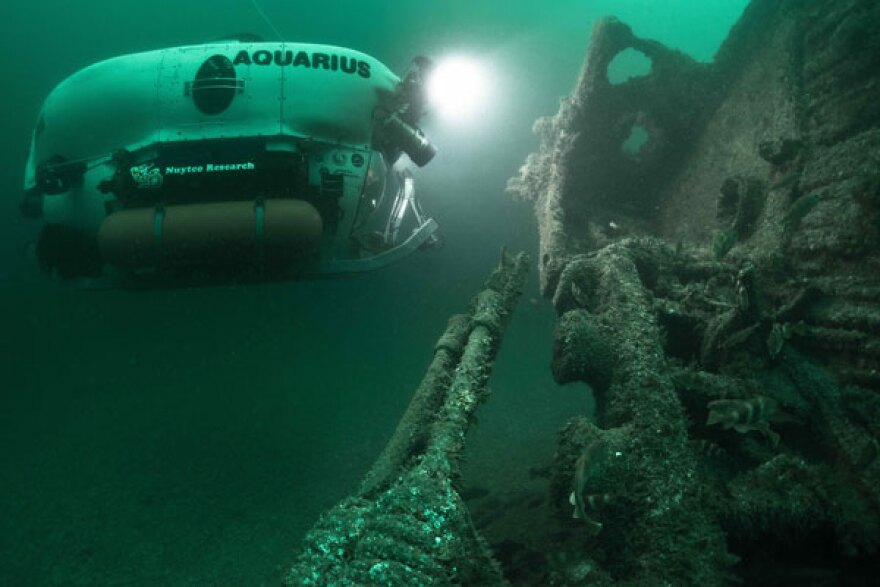On June 6, 1944, the Allies launched the D-Day invasion against the heavily defended Normandy beaches to liberate Europe from the Nazis. In less than 24 hours, more than 5,000 ships—the largest armada in history—crossed the English Channel, along with thousands of tanks and landing craft and 200,000 men. Throughout the operation, hundreds of ships sank while running the gauntlet of mines and bunkers, creating one of the world’s largest underwater archaeological sites.
Film Quote
“Through this careful study of the underwater remains of D-Day, the largest amphibious landing of all time, NOVA viewers will come to a new understanding of the battle of Normandy, how it developed, and how innovations in science, technology, engineering, and mathematics were critical to the Allies’ success,” said Paula S. Apsell, Senior Executive Producer for NOVA.

Reconstructing the D-Day Gliders
While planning for D-Day, the Allies realized that they would need to get soldiers on the ground before the invasion to capture bridges and other strategic locations. Otherwise, they could get trapped on the beaches. So, they came up with a plan to send men behind enemy lines using silent gliders the night before the invasion. This extremely dangerous operation is brought to life for the first time in 70 years by a team at Dassault Systèmes, a French company that built a highly detailed digital model of this WWII-era plane. By Anna Rothschild, posted May 22, 2014
Now, 70 years later, NOVA has exclusive access to a unique international collaboration between military historians, archaeologists, and specialist divers as they carry out the most extensive survey ever done of the seabed bordering the legendary Normandy beachheads. The teams use submersibles, underwater robots and the latest 3D mapping tools to discover, identify and plot the relics on the sea floor in a special two-hour presentation on NOVA “D-Day’s Sunken Secrets.”
In addition to uncovering this underwater battlefield, "D-Day’s Sunken Secrets" also highlights the story of an often neglected group of heroes essential to the success of the D-Day invasion and to winning the war: the engineers. NOVA explores their ingenious solutions to the formidable obstacles faced by the Allies, such as inventing canvas “skirts” that turned tanks into amphibious craft and creating huge spinning chains that detonated German mines lying in the tanks’ path.
NOVA spotlights these and other scientists, mathematicians and inventors—even meteorologists, whose last-minute forecasts were critical to the timing of the invasion. "D-Day’s Sunken Secrets" tells the stories of these unsung heroes whose innovations helped the Allies gain their first foothold in Europe, which spelled the beginning of the end of the Nazi reign of terror.
"D-Day’s Sunken Secrets" chronicles the ambitious six-week expedition led by Sylvain Pascaud, Director of Operations, to explore the famous landing beaches of Normandy, a vast sanctuary that holds sunken ships, tanks, planes and explosive mines. The remarkable expedition was made possible through a unique international collaboration between NOVA and various organizations in Great Britain, Canada, and France.
The major undersea project reveals how the Allied Forces’ intricate planning and advanced technology were vital in assuring the success of the most ambitious and risky military operation ever launched. The expedition focuses their three-dimensional scanning sonar on the disintegrating wrecks and relics of World War II in the hopes of uncovering the untold story of this submerged battlefield. The team also utilizes divers and robotic rovers to get closer views of the myriad of objects below.
NOVA interviews several military historians—including Adrian Lewis, Professor of History at Kansas University and a former Army Ranger who taught cadets at West Point—to answer questions about the military operation and strategy: Where did the landing ship actually end up? Do the location of the ships reveal a pattern—or flaw in planning? Why are so many Sherman tanks located off only one of the landing beaches?
In addition to finding wrecks that reveal battlefield secrets, the expedition brings to life the personal histories of aging WWII War heroes. Small submarines take several intrepid D-Day veterans back in time 70 years—in some cases to the very ships that had been sunk by the Germans. Among them is Bill Allen, a Tennessee Navy medic veteran, 19 years old at the time, who was one of only 28 survivors of the Landing Ship Tank (LST) 523, which was hit by a German mine and sank off the Normandy coast. NOVA’s cameras are there to film as Allen bravely climbs into one of the expedition’s three-man mini submarines to explore the wrecks in hope of finding his old ship.
Much of the hardware deployed in D-Day was part of a huge effort in both Germany and among the Allies to develop the weapons, the airplanes, the landing crafts, and all kinds of innovations that could turn the tide of the war. Each invention had the promise of tipping the balance towards victory. A beach assault would require engineering wholly new ways to land an invading army, and the necessary gear and supplies that the operation entailed.
Few battles of the war were more strategically important than the D-Day Invasion at Normandy. In "D-Day’s Sunken Secrets," NOVA shows that it was a combination of extraordinary operational planning along with significant scientific innovations that ultimately led the Allies to prevail. The complexity that went into the design, engineering, and implementation of the entire D-Day operation can be appreciated by the fact that 70 years after the invasion, we are still in awe of what was accomplished.
Past episodes of NOVA are available for online viewing. NOVA is on Facebook, and you can follow @novapbs on Twitter.














